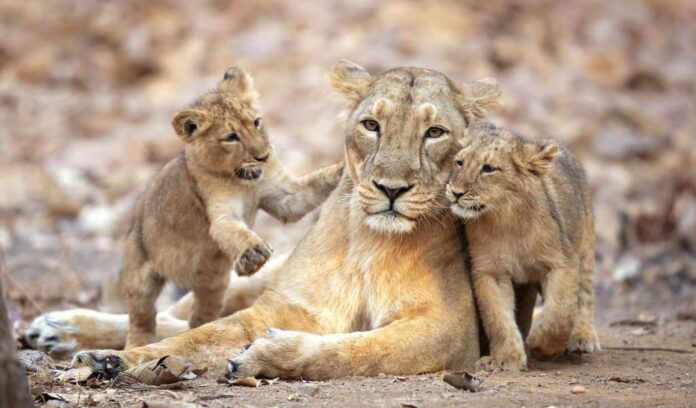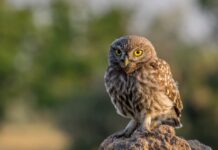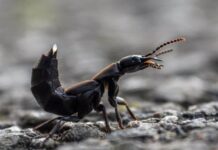When feminism became one of the very hot topics, I started to wonder about female leaders in the animal kingdom. It is very common for animal groups to be led by males, and it is quite fascinating to know that there are female leaders too. The thing is that a majority of female leaders are actually among mammals, and we discuss just that today. Feel free to check out the list below and see which female animals are the leaders of matriarchal society.
1Bonobo
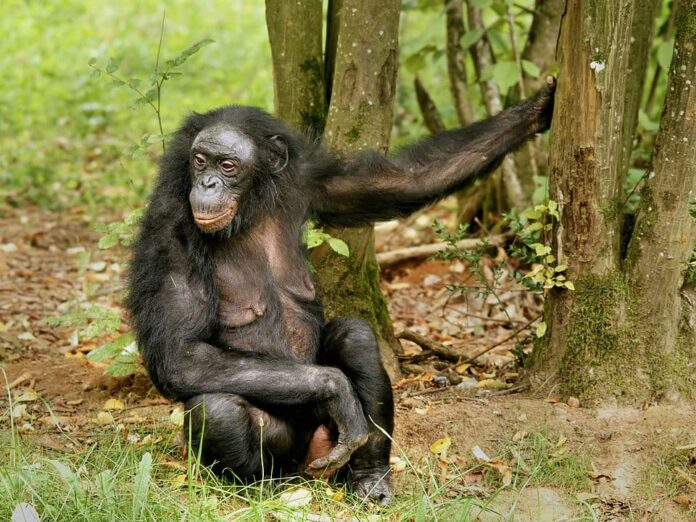
The bonobo is a great ape species with a long history, distinctive appearance, and fascinating lifestyle. You can distinguish bonobos from common chimpanzees by their darker face, longer limbs, and pinker lips. More than that, bonobos also have longer hair on their heads while some individuals have thin hair over some parts of their bodies. Bonobos are both arboreal and terrestrial, and they inhabit primary and secondary forests. They are highly omnivorous, and they hunt small antelopes, smaller primates, and small vertebrates.
While other primates practice patriarchy, bonobos have female leaders instead which is absolutely unique. Female bonobos usually earn their rank from their age, experience, and the ability to forge alliances with other females in the group. Unlike male leaders, bonobos do not use physical intimation to gain power. As leaders, female bonobos are the decision-maker of the group with members of up to 100. The female leaders of the bonobos make travel plans, and they divide foraging groups and choose leaders for each group. Another fascinating thing is that females eat first because they catch and organize dinner.
Now here’s the catch, it is not a complete matriarchal colony because there is still respect towards high-ranking old males. There are some old males that obtain a high rank and act as coalitionary partners to the alpha female. These high-ranking males outrank other males and many females in the group so they can take the initiative to coordinate group movements. Their jobs also alert the group to possible threats and protect the group from predators like leopards and pythons.
2Dwarf Mongoose
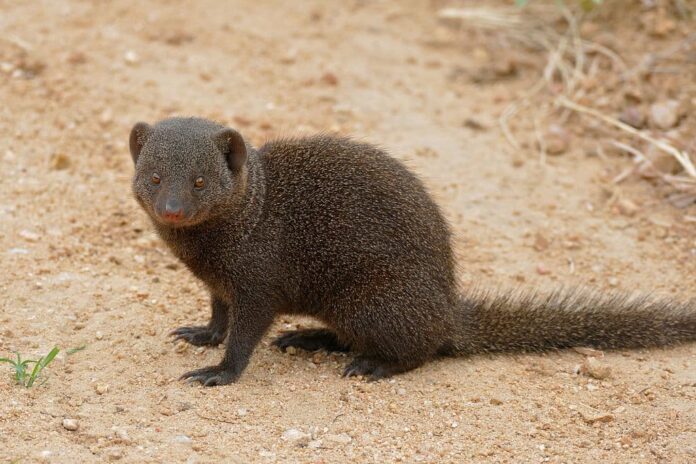
Not the typical animal that we often talk about, dwarf mongooses are actually quite interesting animals. First of all, they are the smallest mongoose species and the smallest African carnivores. A dwarf mongoose has a smooth and glossy coat that varies in color but is usually speckled brown to black. Its body is 18 to 26 centimeters long, and its tail is another 12 to 20 centimeters. Their range is from Somalia and Ethiopia to Eastern South Africa and Namibia, inhabiting brush countries, mountain scrubs, savannas, and woodlands. They spend most of their days looking for food like beetles, eggs, fruits, grasshoppers, small vertebrates, and termites among brush, leaves, and rocks.
Dwarf mongooses live in a pack of 12 or even up to 32, led by an older and dominant female. The second-ranking member in the pack is the dominant female’s mate, and they are the only breeders in the group. Members are family members, generally older offspring of the dominant pair. Everyone in the pack including sub-adults and immigrants works together in cleaning, carrying and feeding juveniles, and babysitting. The routine and leadership remain until the female leader dies, and then the group splits instead of appointing a new leader.
Dwarf mongooses are monogamous, and their territory is actually passed down through generations. The territory usually contains 20 or more termite mounds that they use as den sites, lookout posts, and food sources. The pack is often on the move through their range, seldom using a den site for more than a few days at a time. Small yet aggressive, larger packs tend to displace smaller groups when they meet. Conflicts usually occur at a territory border where two packs use the same termite mounds on a first come, first served basis.
3Elephant
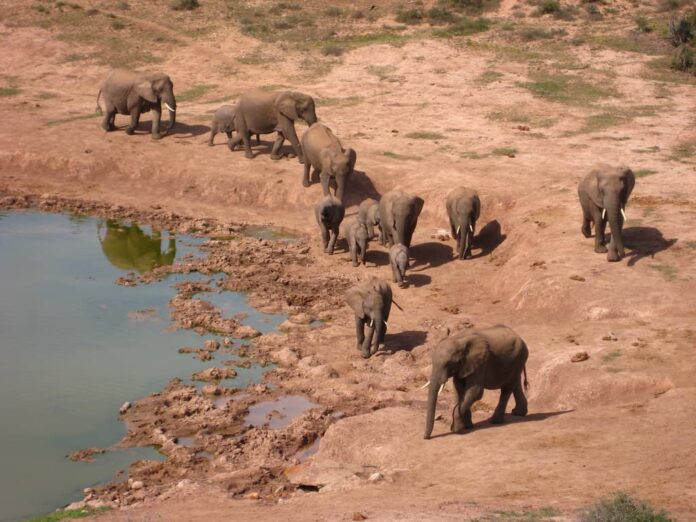
Elephants are the perfect definition of a born leader because adult females don’t even have the choice. The elephants never forget, and they do have excellent memories when it comes to where to lead. Old female leaders of the group remember where the food and water sources are and they lead everyone just there during drought. This is a very great trait because it gives elephants a strong survival advantage, wisdom comes with age, indeed. More than that, unlike the bonobos, there is no competition or interference from males to be leaders. Once the previous leader passes, the next oldest female elephant will resume the position. In some cases, the elephants honor succession so the eldest daughter takes the mother’s place as a leader.
Male elephants live separately and they do not want to take any part of being the leader. Adult males are solitary in nature, and they associate with other males in small unstable groups. In those small groups, it is compulsory to have a hierarchal-ranking social structure. Age and strength will be the factors that determine the leader to protect the group. The docile and quiet ones do not seek leadership roles but they serve as stabilizing members within the group. And these roles will re-adjust and re-establish whenever a male enters or leaves the group.
One of the most fascinating things about these intelligent animals is their mourning behavior for deceased companions. When elephants come across deceased remains of other elephants, a silent pause is taken as they touch the remains with their trunks. Some even carry the bones or tusks as the herd continues to travel which is extremely heartfelt.
4Horse
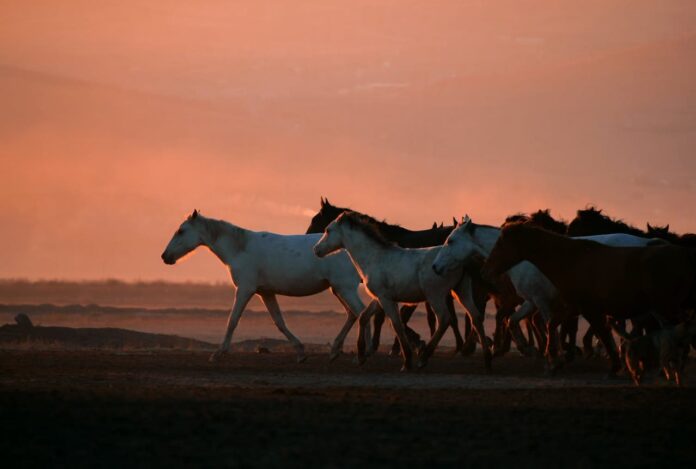
Horses are herd animals that live and travel in a herd of 25 to over a hundred. They also follow matriarchy, and there is a clear hierarchy of rank led by a dominant female; an older mare. The herd moves when and where the leader does while the herd stallion remains at the rear when the herd travels. His job is to fight off predators and other males who try to join the herd. On top of that, the stallion also nips at stragglers to make sure that they keep up with the herd’s traveling speed. The leading mare finds food and water so she drinks first from watering holes, and she also stakes out the best grazing spots. As social creatures, they communicate with each other in various vocalizations such as body language, mutual grooming, nickering, and whinnying.
5Hyena
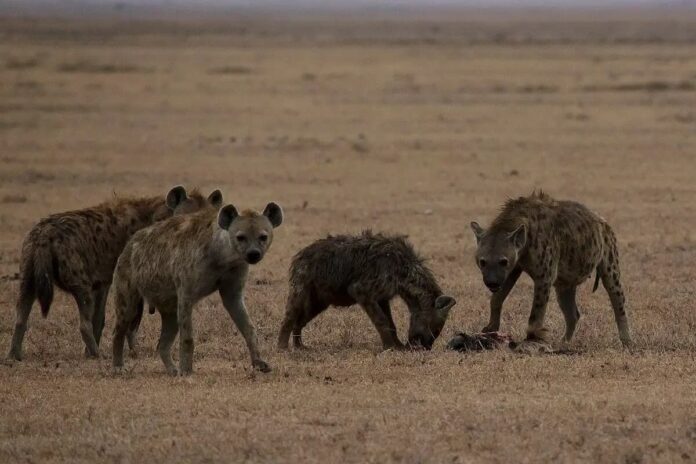
As for our laughing hunters here, females are naturally larger and stronger than males. Well, they are also more aggressive; speaking of a female’s temper. So without a doubt, females will be the leaders. It is true that males lead in hunting but it is always the females who call the shots. However, hungry lactating females often take the lead while the youngsters and males follow them. Daughters will frequently stay with the clan they were born into and inherit their mother’s social rank when she dies. And while female bonobos use their skills to build an alliance, hyenas are rather aggressive. After confirming trustworthy alliances, female hyenas join forces with an attack; how wild is that, right? There can be up to 80 members in a clan, an alpha female has every reason to be tough.
6Killer Whale
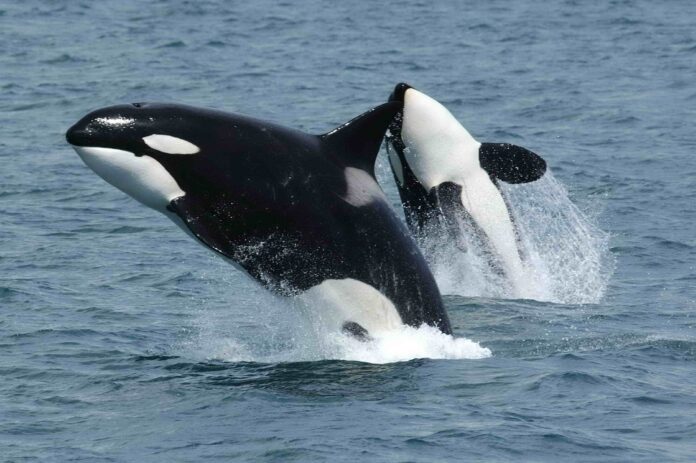
Killer whales or orcas are the apex predators of the waters, swimming on top of the food chain. An orca has a black-and-white body that ranges from 6 to 8 meters long. Probably looking small in photos but an orca weighs from 3 to 4 tons on average. Their sharp teeth allow them to prey on a wide range of food wherever they go. From dolphins and rays to sharks, whales, and more, orcas hunt them all. These toothed whales are highly social, and they travel with their family members in a group known as a pod. Each pod consists of a mother, daughters, sons, cousins, and their children, so anywhere from 2 to 15 members or more.
Similar to the elephants, older and wiser females lead the group. Do you know that female orcas live into their 90s and they are one of the very few mammals known to go through menopause? Exactly, and they remain in their birth area throughout their lives so it is not a surprise they know everything. Orca grandmas know where to find salmons and that is how the female leaders help their extended family thrive. Leadership amongst orcas is passed from mother to daughter along with complex knowledge about food resources and social habits. And just like human mothers, orca mothers discipline their children in various ways. They even show signs of anger through actions such as hitting their tails in the water and making noises with their teeth. Grandma orcas play an important role in the survival of young males and the rest of the pod.
7Lemur
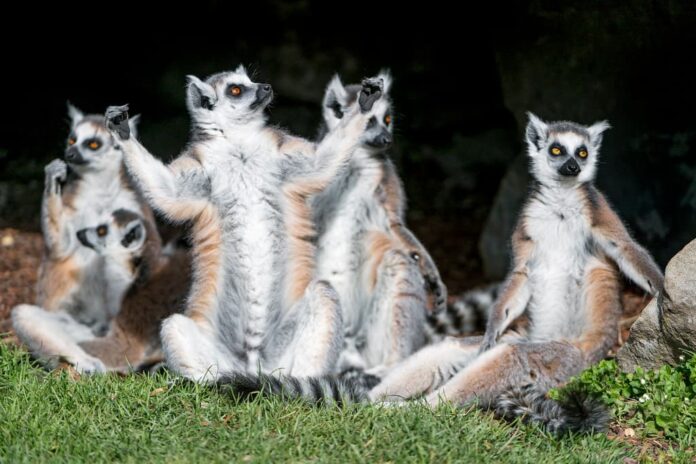
Things are not different from this Madagascar resident, they practice matriarchy in their social structure. Both the black-and-white ruffed lemurs and ring-tailed lemurs, which are the common lemur species, follow female leaders. In fact, females take a dominant role in a majority of lemur species among 100 species. Their leaders often keep the peace within the colony and lead interventions with other colonies. However, some female leaders are also aggressive they snatch food away from males and kick them out of sleeping spots. A female lemur’s size is similar to males when reaching maturity but simple acts of dominance will keep the males in line. Something like occasional bite, fur pulling, slaps, and tail pulling will show who’s the boss.
8Lion
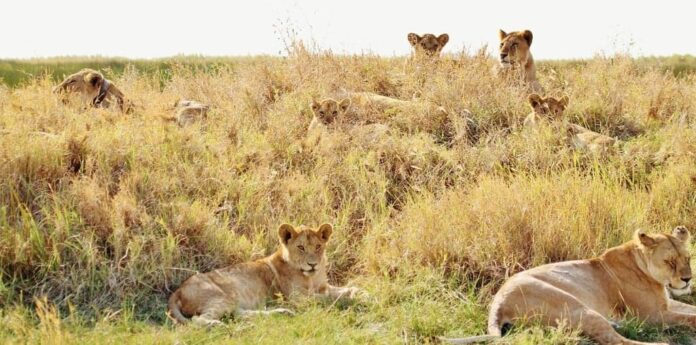
Even the king of the jungle relies on the females when it comes to hunting. As you probably already know, a pride consists of multiple related females along with their offspring and a dominant male. From time to time, a small number of unrelated males also join the pride as well. Though males will be the first to eat, female lions are hunters who are responsible for providing for other members of the pride. Lionesses stay in the area in which they were born their whole lives so they know everything at wherever the light touches. They know where to find the best watering holes and hunting grounds.
On top of that, the females work together to defend their territory from other prides and defend their cubs against adult males. Female lions in the pride give birth at the same time, so they rear the cubs together. In fact, the cubs can suckle from any female with milk; speaking of teamwork.
9Meerkat
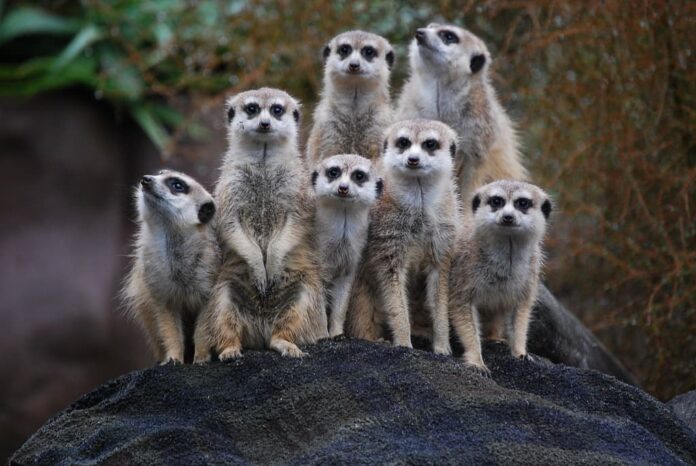
Here is another member of the mongoose family, and they, of course, follow their female leaders. A meerkat is around 24 to 35 centimeters from head to toe, and its coat is light gray to yellowish-brown. This adorable mammal has a broad head, large eyes, a pointed snout, long legs, and a thin tapering tail. If you look from behind, you will also see some poorly defined light and dark bands on its back as well. Some other interesting features of meerkats are their foreclaws that they use for digging and their ability to survive in harsh and dry habitats.
Living in the Kalahari Desert of Southern Africa, meerkats function cooperatively in a matriarchal group called a mob. A mob consists of anywhere from two to 30 individuals, and only the dominant female breeds and produces offspring. And to ensure that the subordinates give her pups undivided attention, the leader will attack her pregnant subordinates, expelling them, or killing their newborn pups. All meerkats in the mob care for the offspring of the dominant female, and they follow their leaders in battling predators or other mobs. Should the dominant female dies, one of the oldest and biggest females of the mob will resume the position.
10Sheep
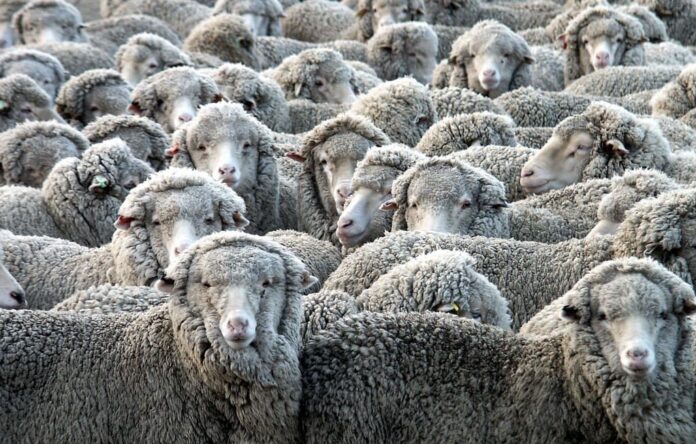
Sheep are gregarious animals that move in large flocks, and the flocks are led by female leaders; the ewes. It is also not uncommon for rams to act as a protector and try to boss around though never works. Rams usually spend time with the flocks during the breeding season. The rams will try to protect the flock members from danger as well as keep the other rams from stealing the females. The ewes will also lead the rams, and there is nothing the rams can do.
Related: Animal Kingdoms With Queens

